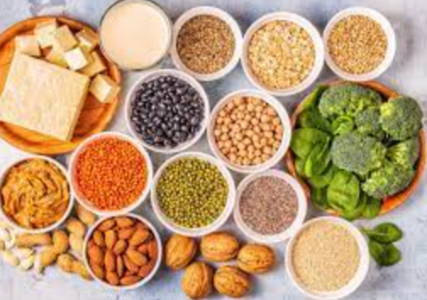Best Protein Sources for Vegetarians in India

“Where do you get your protein from?” If you’re vegetarian, you’ve probably heard this more times than you can count.
There are plenty of protein sources available to Indian vegetarians. Powerful plant-based ingredients that can promote strength, stamina, and vitality are abundantly available in our own kitchens. We just need to be more mindful of what we put on our plates.
If you’ve been showing up for your health with movement, such as attending Habuild online classes yoga, it’s important that your meals support the effort you’re putting in.
So here’s a simple guide to the best vegetarian protein sources in India.
How Much Protein Do You Really Need?
For most healthy adults, the general recommendation is 0.8 to 1 gram of protein per kg of body weight per day.
So if you weigh 60 kg, you need around 48 to 60 grams of protein daily. If you’re more active (doing regular yoga, walking, or strength training), you may need a bit more, around 1.2g per kg.
Best Vegetarian Protein Sources
1. Dal & Legumes
Moong, masoor, toor, and urad… these dals are comfort food and they form the foundation of protein in a typical Indian vegetarian diet. Protein content is about 9 to 15g per cooked cup. Pairing dal with rice or roti completes the amino acid profile.
Chickpeas, kidney beans (rajma), and black chana also offer about 14 to 20g of protein per cooked cup. Great in curries, salads, or rolls. A solid option for lunch after your morning session from Habuild online classes yoga.
However, since dals and legumes are rich in carbohydrates, it’s important to be mindful of portion sizes, especially if you’re managing your weight or blood sugar.
2. Dairy
Milk, curd, buttermilk, paneer, and cheese are rich in protein. They are also complete sources meaning they offer all essential amino acids. A cup of milk gives about 8g, curd around 5 to 6g, and 100g paneer offers a solid 20g.
Hung curd or Greek yogurt has nearly double the protein with about 10 to 12g per cup. You can make it at home by straining regular curd in a muslin cloth for a few hours.
Having hung curd at lunch or paneer bhurji at dinner is an easy protein boost, to support muscle repair after yoga classes in Hyderabad.
3. Millets
Millets like ragi, jowar, bajra, and foxtail millet are excellent sources of vegetarian protein, offering around 8 to 12g per 100g. They contain fiber, minerals, and antioxidants and have a richer amino acid profile than rice.
They’re gluten-free and light on the gut. Pair millets with dal, curd, or sprouts for balanced meals that fuel your day.
4. Soy Products
Soybeans, soy chunks, and tofu are excellent sources of protein. 100g of soy chunks contains an incredible 50g of protein and 100g of tofu contains about 10g.
Grill tofu for salads, stir-fry it into sabzis, or use soya chunks in pulao or curry. They’re especially beneficial when you’re recovering from strength training or Habuild online classes yoga.
Soybeans, soy chunks, and tofu are excellent protein sources. 100g of soy chunks has about 50g of protein, and tofu offers around 10g. Add tofu to salads or sabzis, and soya chunks to pulao and curries. Great after strength training or Habuild online classes yoga. Just be mindful as soy contains goitrogens, so enjoy it 2–3 times a week.
5. Nuts & Seeds
Almonds, peanuts, walnuts, chia, flax, pumpkin, and other nuts and seeds are easy ways to incorporate protein into your diet. Ten almonds supply around 3g of protein, two tablespoons of peanut butter provide about 8g, and one tablespoon of chia seeds provides about 3g.
These make for excellent mid-morning snacks or smoothie add-ins, especially on busy days when you’re headed to yoga classes in Hyderabad. But eat in moderation, they’re calorie-dense with their healthy fat content.
See Also: How to Host a Private Event at One of the Best Bars in Las Vegas
6. Sprouts & Whole Grains
Sprouted moong or chana offer better digestibility and around 6 to 8g protein per half cup. Add them to salads or as a topping on toast.
Whole grains like brown rice, quinoa, oats, and whole wheat provide 4 to 8g protein per cup (cooked). When paired with dal or legumes, you get a more complete amino acid profile.
Tips to Hit Your Daily Protein Goal
- Combine grains and pulses (like khichdi or paratha with curd).
- Include a protein source in every meal (dal, curd, paneer, tofu, or sprouts).
- Use nuts/seeds as snacks and toppings.
- Mix and match a variety of foods for better amino acid coverage.
Final Thought
Hitting your protein goals on a vegetarian diet isn’t as hard as it’s made out to be. A well-planned vegetarian plate filled with everyday Indian staples can give you all the strength, stamina, and nourishment you need. You already have the ingredients. Now it’s time to build the plate.







